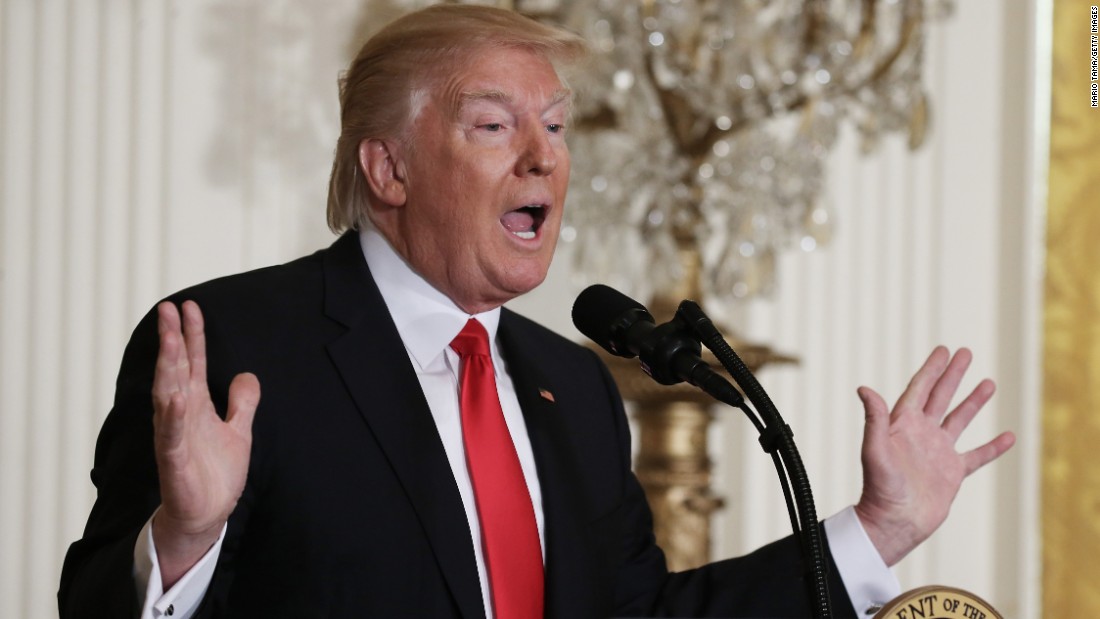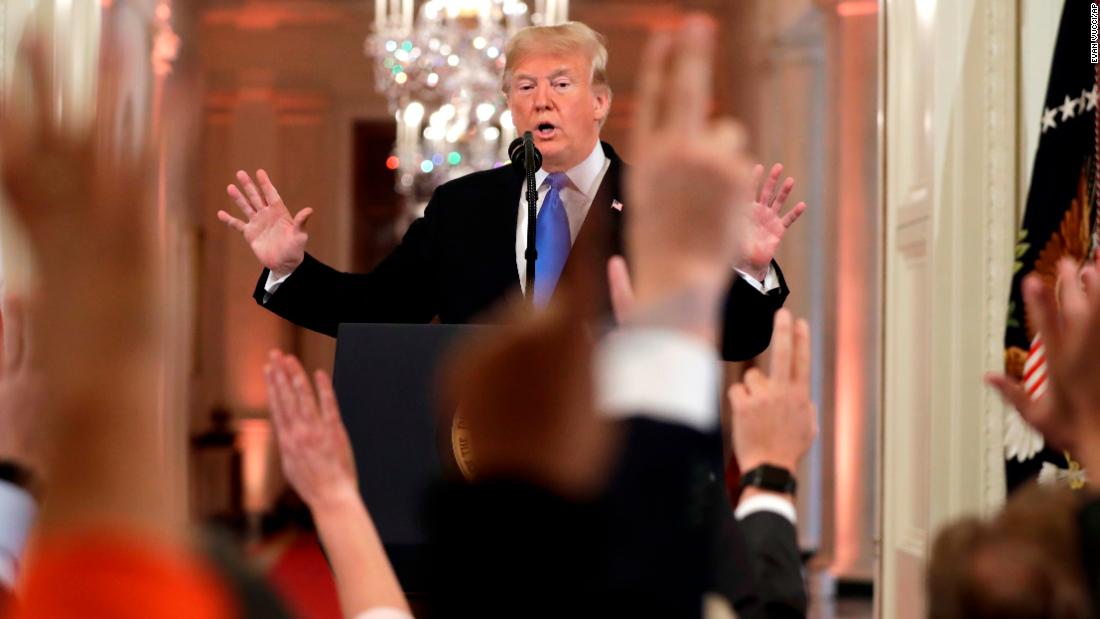Key Themes and Topics: Trump Press Conference

Donald Trump’s press conferences were characterized by a distinct set of recurring themes and topics that often reflected his political agenda and personal beliefs. These themes not only shaped his public image but also influenced public discourse and the national conversation on various issues.
The Economy and Trade
Trump’s press conferences frequently focused on the economy, often boasting about economic growth, job creation, and stock market performance during his presidency. He frequently touted his “America First” policies, including tariffs on imported goods, as key drivers of economic prosperity. These claims were often met with skepticism and criticism from economists who pointed to factors beyond Trump’s policies, such as the Federal Reserve’s monetary policies, as major contributors to economic growth.
“We have the greatest economy in the history of our country, the greatest economy in the history of the world.” – Donald Trump
Immigration and Border Security
Immigration was a central theme in Trump’s press conferences, where he frequently emphasized the need for stricter border security and a reduction in illegal immigration. He often framed the issue in terms of national security and economic threats, highlighting the perceived dangers of undocumented immigrants and the need to protect American jobs. His rhetoric often centered around the construction of a wall along the US-Mexico border, which became a defining symbol of his immigration policies.
“We have to have a wall. It’s very important to have a wall. We need a wall.” – Donald Trump
Political Opponents and “Fake News”
Trump’s press conferences were often characterized by attacks on his political opponents, particularly Democrats, the media, and special counsel Robert Mueller’s investigation into Russian interference in the 2016 election. He frequently labeled media reports he disagreed with as “fake news,” accusing journalists of bias and dishonesty. This rhetoric contributed to a growing distrust of the media among his supporters, while further polarizing the political landscape.
“The fake news media is the enemy of the American people.” – Donald Trump
Social and Cultural Issues
Trump’s press conferences also addressed a range of social and cultural issues, often reflecting his conservative views on topics like abortion, gun control, and LGBTQ+ rights. He frequently expressed his support for traditional values and opposed policies he viewed as promoting “political correctness.” These stances often drew criticism from progressive groups who argued for greater social and cultural inclusivity.
“We are going to make America great again, and we are going to make America safe again.” – Donald Trump
Table of Key Themes and Topics
| Topic | Prominence | Impact on Public Opinion |
|---|---|---|
| Economy and Trade | High | Increased economic optimism among supporters, but also skepticism among critics. |
| Immigration and Border Security | Very High | Deeply polarized public opinion, with strong support among Republicans and opposition among Democrats. |
| Political Opponents and “Fake News” | High | Increased distrust of the media among Trump supporters, and further polarization of political discourse. |
| Social and Cultural Issues | Moderate | Reinforced existing divides between conservative and progressive groups, with limited impact on broader public opinion. |
Impact and Legacy

Donald Trump’s press conferences were a defining feature of his presidency, often characterized by their contentious nature, confrontational tone, and unconventional format. They had a profound impact on American politics and media, leaving a lasting legacy that continues to influence the relationship between the president and the press today.
Changes in the Relationship Between the President and the Press, Trump press conference
Trump’s approach to press conferences fundamentally altered the dynamics between the president and the media. His frequent attacks on the press, labeling them as “the enemy of the people,” created a climate of distrust and hostility. He often used press conferences to spread misinformation and promote his own agenda, blurring the lines between truth and fiction.
- Trump’s press conferences were often dominated by his personal attacks on journalists, with him frequently calling them “fake news” or “dishonest.” This created a hostile environment for reporters, who felt pressured to defend themselves or risk being targeted by the president.
- Trump’s willingness to spread misinformation and conspiracy theories through press conferences eroded public trust in the media. He often made false claims or distorted facts, leaving the press scrambling to fact-check and correct his statements.
- Trump’s confrontational style of communication, which often involved interrupting journalists and refusing to answer their questions, normalized a disrespectful and adversarial relationship between the president and the press.
The Long-Term Impact on American Politics and Media
Trump’s press conferences had a lasting impact on American politics and media. His attacks on the press emboldened other politicians to follow suit, further polarizing the political landscape and creating a more hostile environment for journalists.
- Trump’s use of press conferences to spread misinformation and promote his own agenda has led to a growing distrust in traditional media outlets. This has created fertile ground for the spread of disinformation and conspiracy theories, particularly on social media platforms.
- The confrontational style of communication that Trump popularized has become commonplace in American politics. Politicians increasingly engage in personal attacks and refuse to engage in substantive debate, further polarizing the political landscape and making it more difficult to find common ground.
- Trump’s press conferences have also led to a decline in the public’s trust in government institutions. His frequent attacks on the media, judiciary, and other branches of government have eroded public confidence in these institutions, making it more difficult for them to function effectively.
The Legacy of Trump’s Press Conferences
Trump’s press conferences will be remembered for their chaotic and unpredictable nature. They were often dominated by his personal attacks on journalists, his willingness to spread misinformation, and his disregard for journalistic norms.
- Trump’s legacy is one of a president who saw the press as an adversary rather than a partner in informing the public. His attacks on the media and his disregard for truth have had a lasting impact on the relationship between the president and the press, making it more difficult for journalists to hold presidents accountable.
- Trump’s press conferences also highlighted the growing power of social media in shaping public discourse. His ability to bypass traditional media outlets and communicate directly with his supporters through Twitter and other platforms has created new challenges for journalists and political institutions.
- Trump’s press conferences have also served as a cautionary tale about the dangers of misinformation and the importance of a free and independent press. His attacks on the media and his willingness to spread false information have shown the importance of a strong and independent press in holding power to account.
Emulation and Criticism of Trump’s Press Conference Style
While Trump’s press conference style has been criticized by many, it has also been emulated by some politicians. Some politicians have adopted Trump’s confrontational style of communication, while others have used press conferences to spread misinformation or promote their own agenda.
- Some politicians have adopted Trump’s confrontational style of communication, engaging in personal attacks on journalists and refusing to answer their questions. This has further eroded public trust in the media and created a more hostile environment for journalists.
- Other politicians have used press conferences to spread misinformation or promote their own agenda. They have often made false claims or distorted facts, leaving the press scrambling to fact-check and correct their statements. This has contributed to a growing distrust in traditional media outlets and has made it more difficult for the public to discern truth from falsehood.
You know, those Trump press conferences were something else. One minute he’s talking about the economy, the next he’s ranting about how someone’s “not very nice” to his hair. Reminds me of that time I saw Gwen Walz, Minnesota’s First Lady, give a speech about education , and she was so passionate, I swear, the whole room felt like it was about to burst into flames.
Anyway, back to Trump, I think he just needed to be reminded that a press conference isn’t a reality show audition.
You know, sometimes those Trump press conferences feel like they go on forever. I mean, who needs a 3-hour lecture on the merits of his hairspray when you could be exploring the tiny, whimsical world of a Polly Pocket Airbnb ?
At least with the Polly Pocket, you can just close the lid and pretend the whole thing never happened. Back to the press conference, I guess we’ll all be stuck with his hairspray monologue for the foreseeable future.
